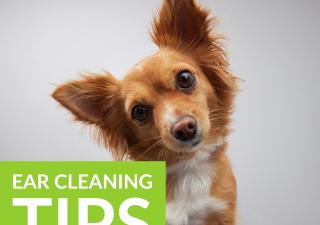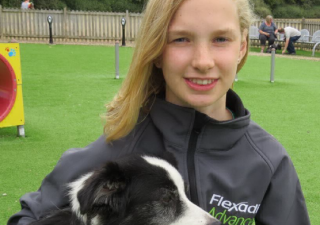
A simple guide to treating your pet for fleas and ticks
Back to overviewParasites can cause irritation, itchiness and can be the source of significant discomfort and distress.
A flea infestation can cause excessive grooming and hair loss, and could lead to a more serious skin disease.
However, just because your pet isn’t scratching doesn’t necessarily mean he or she doesn’t have fleas.
What is a flea?
- The flea is a parasite which feeds on blood from your pet as well as wildlife and occasionally humans.
- The egg, larvae and pupae live in your pet’s environment.
- The adults live on your pet.
- Therefore you must treat both the animal and your home to ensure you remove all fleas. Just doing one or the other will not eliminate the problem.
Your pet can gain fleas from:
- Other pets whilst out and about
- Contact with wildlife
- The eggs, larvae and pupae living in your pet's environment.
They then fall off your pet and lay eggs in your pet's environment such as in carpets or sofas. The eggs will hatch into larvae, which later develop into pupae. The pupae hatch and the adult flea will jump onto the nearest host to feed (i.e. your pet or you) and the cycle starts again.
What is a tick?
- The tick is a member of the arachnid (spider) family. The tick feeds on blood from your pet until it is engorged.
- If you find a tick on your pet, take it to your vet for removal ideally within 24 hours.
- Regular treatment will help protect your pet from ticks attaching in the first place.
Ticks are often found in warmer moist environments such as woods or meadows with long grass, although any pet with outdoor access can get ticks.
Ticks also live and feed on wildlife and farm animals so any pet who comes into contact with these animals could catch ticks. They can be found on your pet's skin attached by barbed mouthpieces.
How do I know if my pet has fleas?
Detect fleas on your pet by brushing your pet's coat and placing collected hair onto damp white paper or tissue.
If your pet has fleas you may find the small insects on the brush or comb.
Alternatively, you may find black spots of flea faeces and red – brown smudges, which indicate fleas are present.
How do I know if my pet has ticks?
Ticks attach to your pet using barbed mouthparts so will not drop off when disturbed.
You should be able to see ticks when you part your pet's hair.
They are small and dark in colour.
How do I treat fleas and ticks?
You can purchase spot on products from your vet to treat your pet yourself at home.
Ask your vet for advice about the best product for your pet.
Spot on flea treatments work by being absorbed into your pet’s skin and NOT the blood as many people think.
The product dissolves in to the oils on the surface of the skin and disperses over the entire body, helping to kill fleas and ticks all over your pet.
How to apply the treatment:
- Apply the product somewhere where your pet cannot lick off the treatment. The base of the neck is the best place.
- The product needs to be applied directly onto the skin, so ensure the fur is gently parted before you apply.
- Make sure you squeeze the whole pipette onto your pet.
- If you have more than one pet, don’t let them lick each other.
Hints and Tips on treating your pet successfully
Make sure you empty the whole pipette onto your pet's skin as directed - not the fur.
Don't bathe your pet or let them swim for 2 days after application.
Make sure you treat your pet's environment with an insecticidal spray and mechanical cleaning (eg. vacuuming) where your pet spends a lot of time - especially in "hot spots" such as their basket.
Tips & Tricks
- Easter is a wonderful time of year with so many chocolate Easter eggs in abundance, but make sure you do not let your pet near them.
- With Brexit deal still in negotiation and a possibility of a ‘no deal’ scenario, there are no concrete answers just yet – but to help you become more informed, here is our Q&A on what we can find so far.
- Build-up of wax and debris in your pet's ear canals can lead to discomfort and irritation. Cleaning your pet’s ears can have a lot of benefits and here are some tips to get you started!
- We had a great time catching up with Mariann Bayliss, our sponsored agility handler last week. We met her competing dog, Ila, and her 5 month old puppy Coral.









